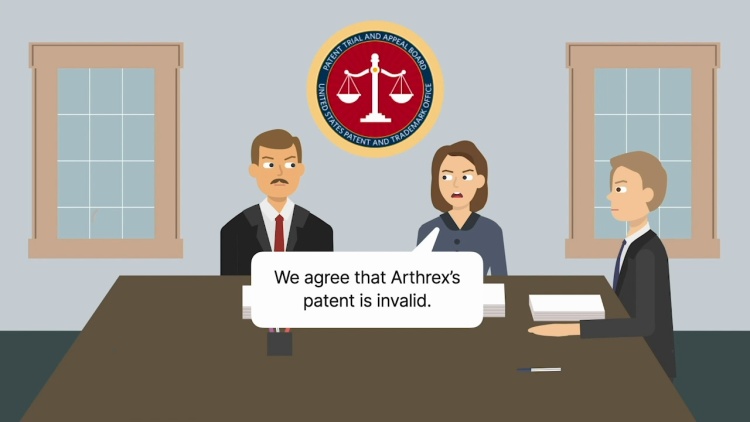United States v. Arthrex, Inc.
United States Supreme Court
141 S. Ct. 1970 (2021)
- Written by Haley Gintis, JD
Facts
Congress established the Patent Trial and Appeal Board (the board) to review existing patents and issue a final decision as to whether the patent remained valid by satisfying newer patentability requirements. The board was within the United States Patent and Trademark Office (PTO), which was overseen by the PTO director (the director). The director was a principal officer within the executive branch. The board consisted of administrative patent judges (APJs). Congress authorized the secretary of commerce (the secretary) with the power to appoint the APJs and declared the APJs to be inferior officers. The director had the authority to decide which APJs would oversee which cases and to order rehearings. Smith & Nephew filed a petition with the board to review a patent held by its competitor Arthrex, Inc. (defendant). The board declared the patent invalid, and accordingly, the United States (the government) (plaintiff) declared Arthrex’s patent invalid. Arthrex appealed to the United States Court of Appeals for the Federal Circuit on the ground that the appointment of the APJs and the power the APJs had to issue final decisions were unconstitutional. The Federal Circuit returned a verdict in Arthrex’s favor on the ground that the statutory scheme violated the Appointments Clause in Article II of the United States Constitution, which required principal officers to be appointed by the president of the United States and receive Senate confirmation. The government appealed, arguing that the appointment did not violate the Appointments Clause, because the APJs were inferior officers for the reason that the director, as a principal officer, could control the board by picking which APJs saw which cases.
Rule of Law
Issue
Holding and Reasoning (Roberts, C.J.)
Concurrence/Dissent (Gorsuch, J.)
Concurrence/Dissent (Breyer, J.)
Dissent (Thomas, J.)
What to do next…
Here's why 899,000 law students have relied on our case briefs:
- Written by law professors and practitioners, not other law students. 47,000 briefs, keyed to 994 casebooks. Top-notch customer support.
- The right amount of information, includes the facts, issues, rule of law, holding and reasoning, and any concurrences and dissents.
- Access in your classes, works on your mobile and tablet. Massive library of related video lessons and high quality multiple-choice questions.
- Easy to use, uniform format for every case brief. Written in plain English, not in legalese. Our briefs summarize and simplify; they don’t just repeat the court’s language.





